Anolis fuscoauratus
—
Brown-eared Anole
Also known as:
Slender Anole, Slender Amazon Anole
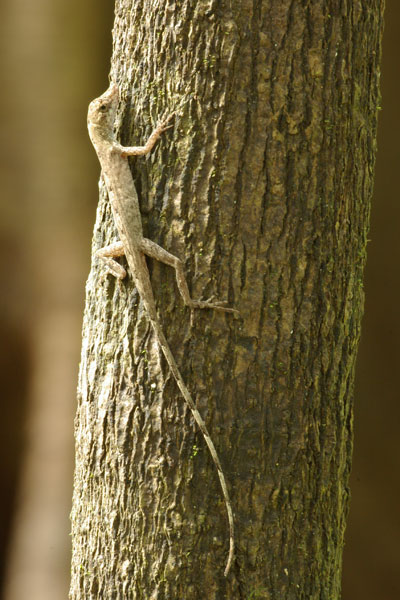
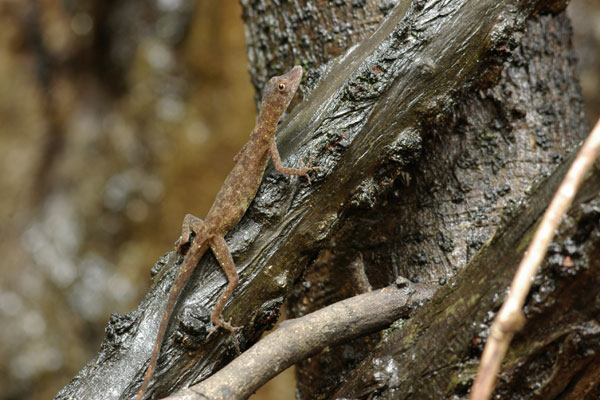
These anoles were extremely graceful and wary, leaping from twig to branch in effortless silence. We spent ten or fifteen minutes trying to maneuver the first one we saw into sitting still in reach of my camera. Eventually I got the first photo above. Later in the day I snuck up on a couple others without spooking them, including the one in the second photo above.
Here is an account of the four days we spent at Uakari Floating Lodge in the Mamirauá Sustainable Development Reserve.
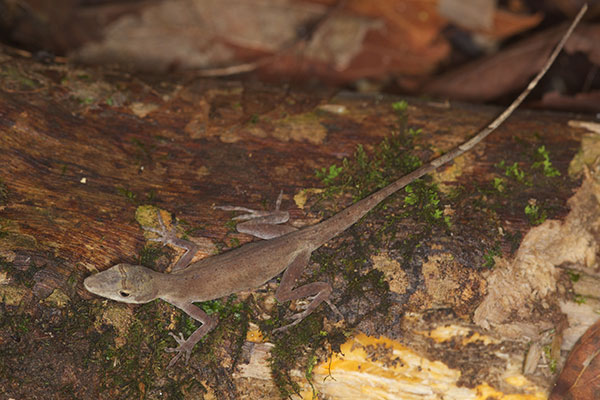
This is the most drab of the anole species in Peruvian Amazonia.
Here is a complete list of the herps I saw in the wild on my 2013 MT Amazon Expeditions trip.
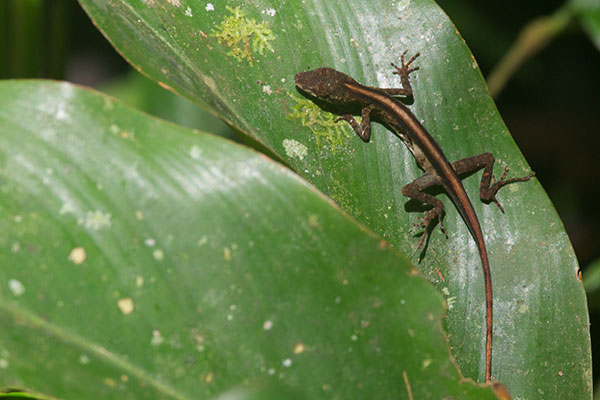
Females are slightly less drab than males, with a dark-bordered cream stripe down the back. Still pretty drab though. This one is talking the "Slender Anole" name particularly literally.
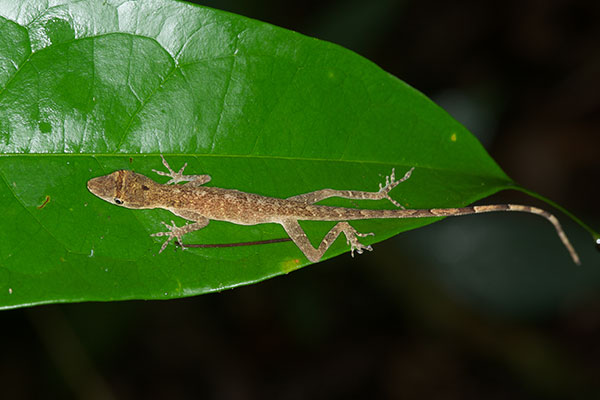
The anoles in this area can be tricky to tell apart, and I had originally identified this one as Anolis ortonii but was corrected by someone far more knowledgable than I on iNaturalist.
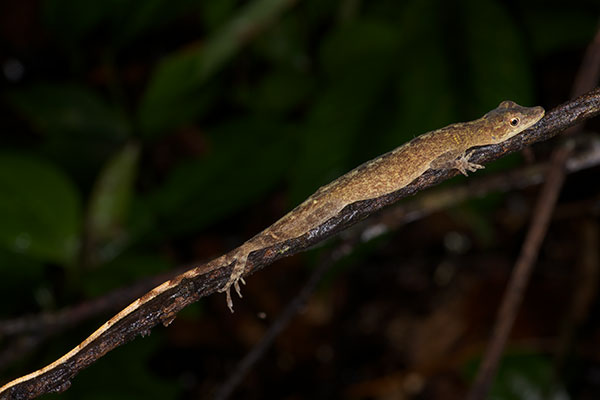
There were plenty of sleeping Anolis ortonii in 2014 as well. I still haven't seen one of these during the day in Peru.
Here is a complete list of the herps I saw in the wild on my 2014 MT Amazon Expeditions trip.
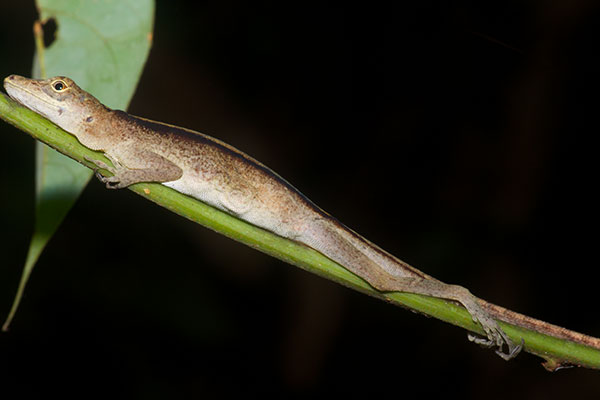
About half of the sleeping anoles seen in the forest at night are on leaves, and the other half are on twigs or thin shoots, like this one.
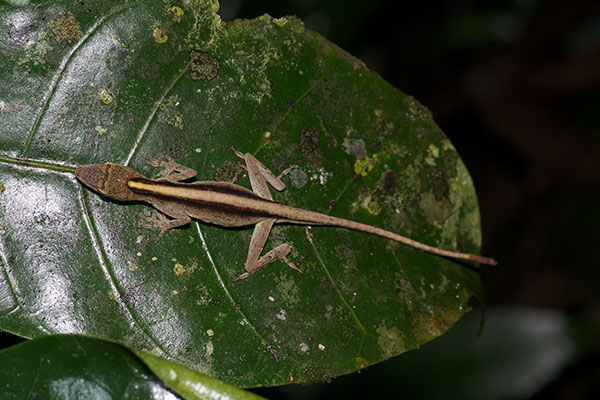
Even on a slow herping night in the Peruvian rainforest, one can always count on finding at least a handful of sleeping lizards.

One last sleeping Peruvian anole, at least for 2014. This one's a youngster, about half-grown.
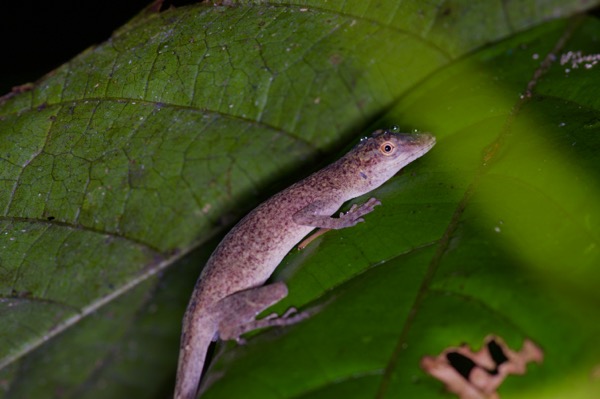
I have trouble telling this species apart from Anolis ortonii. This one seems significantly thicker than your typical A. fuscoauratus, so maybe I've gotten this one wrong?
My Travelogues and Trip Lists page includes a complete list of the herps I saw in the wild on my 2016 MT Amazon Expeditions trip.
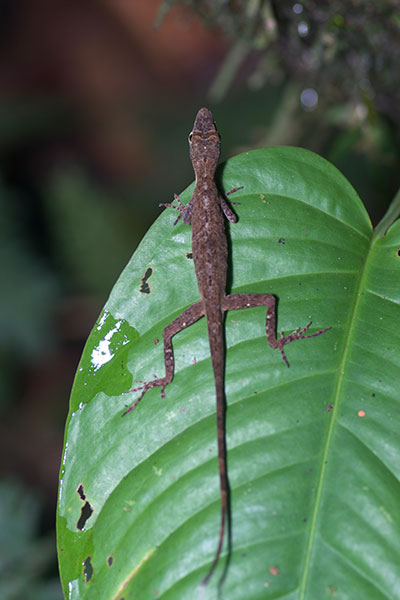
This is a more standard-looking one, nice and thin.
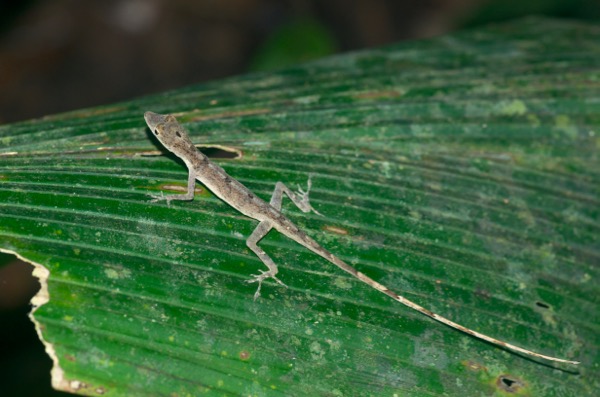
And another from the next night. Many of them have the alternating black-and-white vertebral stripe that is particularly prominent here.
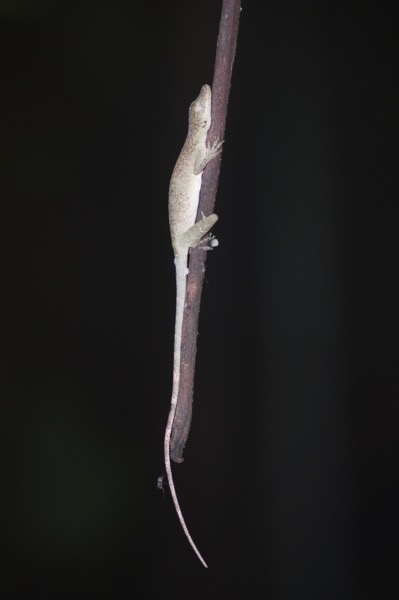
This seems like it would be easy for predators to notice at night, but the difference in color between the lizard and the twig isn't as large as the photo makes it out to be. The lizard's skin is more reflective than the twig, so the lizard looks lighter as it reflects the camera's flash.
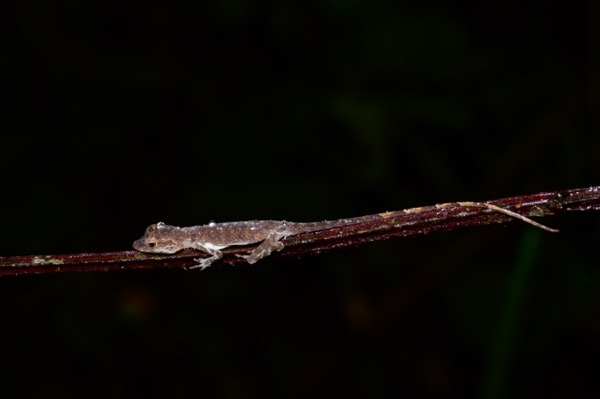
A tiny baby covered in water drops from recent rain.
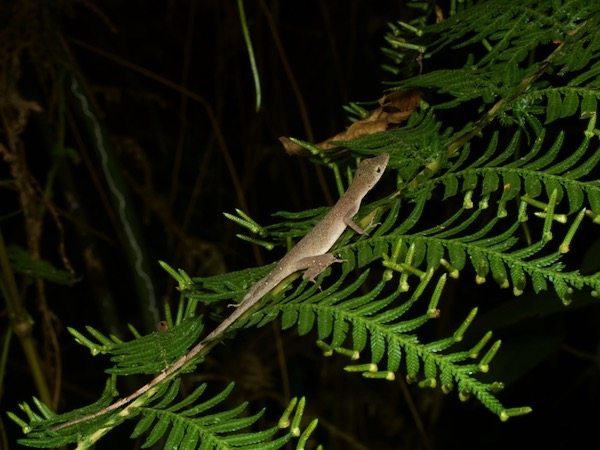
This one's bucking the twig-or-big-leaf trend, having chosen a fern for its perch.
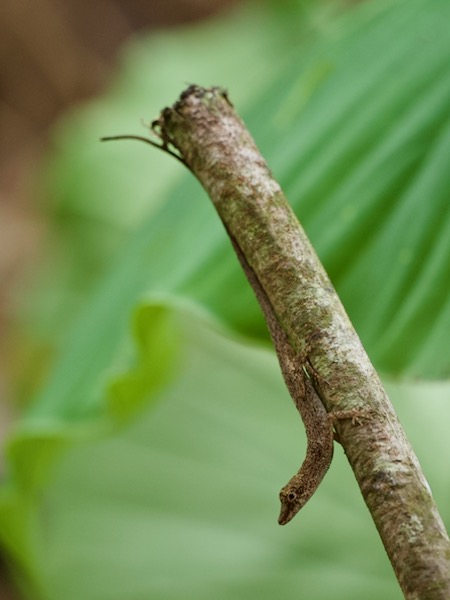
It takes some real balance to be able to sleep on top of a thin twig like this. Check out that crazy hind feet positioning.
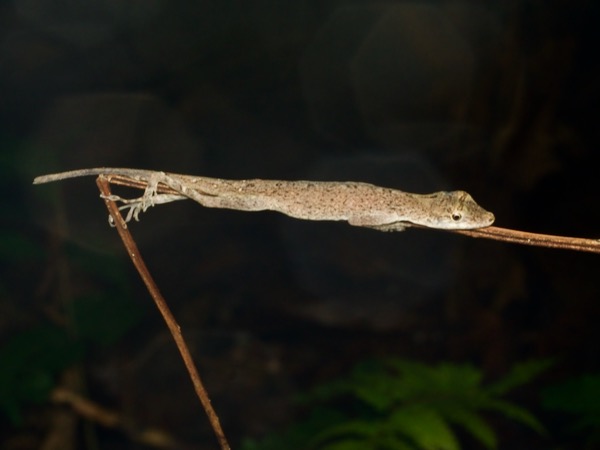
This anole in ambush position has the honor of being the only anole I saw during the day on this entire trip. A far cry from the Caribbean, or Florida, where it seems you can't take ten steps during daylight hours without seeing a few of these lizards.
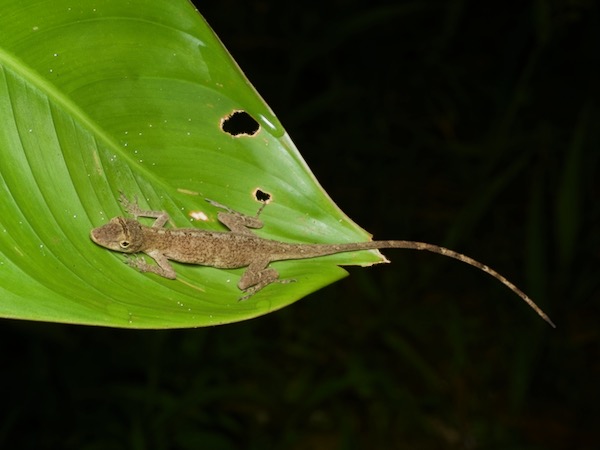
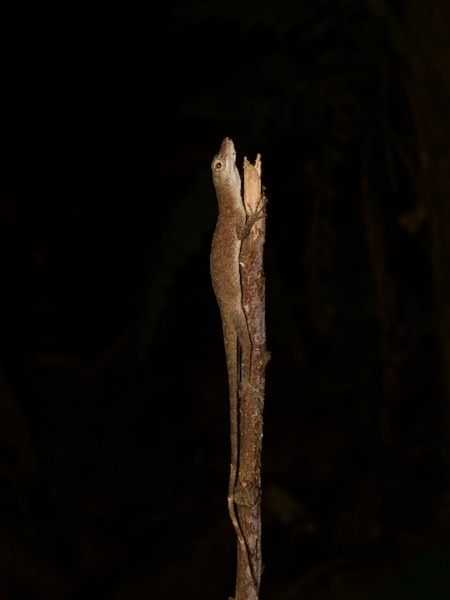
Like snowflakes, no two anoles ever sleep identically. I guess since their eyes are open, these aren't actually sleeping. But neither are the snowflakes, so the analogy still holds.
Online references:
- Anolis fuscoauratus account on The Reptile Database
Printed references:
- Bannerman, M. 2001. Mamirauá: A Guide to the Natural History of the Amazon Flooded Forest
- Bartlett, R.D., and Bartlett, P. 2003. Reptiles and Amphibians of the Amazon: An Ecotourist's Guide
- Duellman, W.E. 2005. Cusco Amazónico: The Lives of Amphibians and Reptiles in an Amazonian Rainforest